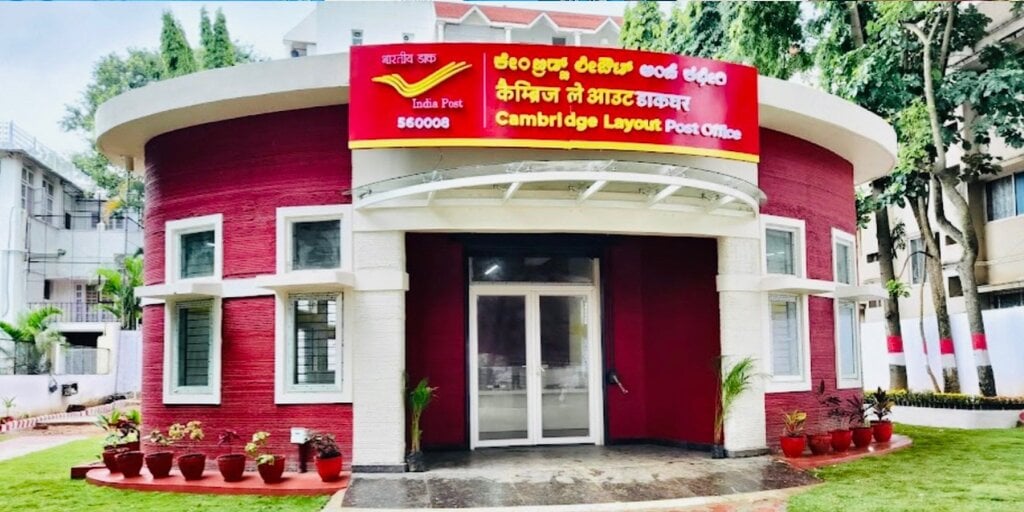Bricks are boomer tech now. India recently celebrated the opening of its first-ever 3D printed post office. Located in Bengaluru—the capital and largest city of the southern Indian state of Karnataka—the bold structure was made possible through a collaboration between the Indian Institute of Technology (IIT) Madras and multinational engineering conglomerate Larsen & Toubro.
The post office was completed in just 43 days—two days ahead of schedule—and is being heralded as a showcase of the efficiency and potential of 3D printing technology.
India’s Minister for Railways, Communications, Electronics & Information Technology, Ashwini Vaishnaw, praised the 1,021-square-foot construction project, saying that such accomplishment reflects the philosophy of a self-reliant India. The concept, attributed to Atmanirbhar Bharat, is frequently cited by the government as representative of its plans to lead the nation towards a more developed, powerful economy.
To build the post office, a robotic 3D printer methodically placed layers of specialized concrete, resulting in a cohesive structure with no vertical joints. This process also makes it possible to build curved structures without the limitations of traditional flat walls, which need structural reinforcements to avoid collapsing.
This Earth-bound achievement follows another recent milestone: The country recently became the first nation to land on the moon’s south pole.
George Abraham, Head of Operations at Larson & Toubro, highlighted that the project’s efficiency was due to robotic intervention and pre-embedded designs.
“The construction timeline was reduced from the usual 6-8 months to 43 days, and the cost was [about $27,840], marking a 30-40% reduction in expenses compared to conventional construction,” Abraham stated.
Unleashing 3D printing potential
3D printing remains quite popular among the DIY community and tech enthusiasts, but its use cases go far beyond printing toys, cases and stands. It has the potential to transform various industries, from construction and manufacturing to even healthcare and education. For the former, 3D printing technology has already been used to build school buildings and churches.
The post office again highlights the potential of this technology to revolutionize the construction industry, reduce costs, and accelerate timelines. Project partners now hope to replicate this technology in 400 different places, potentially triggering growth in low-cost housing solutions.
As the world continues to grapple with housing shortages, environmental concerns, and the need for sustainable development, 3D printing technology offers a viable solution. It enables the creation of complex structures with minimal waste, reduces the need for manual labor, and allows for customization and innovation in design.
As the world explores innovative solutions to address myriad challenges, 3D printing technology might help people build (or print) a better future.
Stay on top of crypto news, get daily updates in your inbox.
- SEO Powered Content & PR Distribution. Get Amplified Today.
- PlatoData.Network Vertical Generative Ai. Empower Yourself. Access Here.
- PlatoAiStream. Web3 Intelligence. Knowledge Amplified. Access Here.
- PlatoESG. Automotive / EVs, Carbon, CleanTech, Energy, Environment, Solar, Waste Management. Access Here.
- PlatoHealth. Biotech and Clinical Trials Intelligence. Access Here.
- ChartPrime. Elevate your Trading Game with ChartPrime. Access Here.
- BlockOffsets. Modernizing Environmental Offset Ownership. Access Here.
- Source: https://decrypt.co/154399/india-opens-a-3d-printed-post-office-boosting-hopes-for-housing














